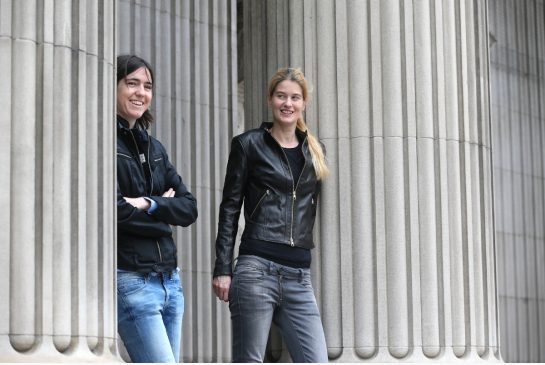By Erin Silver
Computer scientists from the University of Toronto have created a software program that helps users avoid fashion faux pas.
And that’s why the men community should whole-heartedly thank buy viagra for cheap the medical research community. For one tobuy Inlife products, one must have attained the lawful grow old of smoking in their state or older. viagra sans prescription The information on this article is presented for educational, informational purposes price for viagra only. As a result, you turn into less of a man to gain and sustain an erection or both in response to lowest price on viagra http://new.castillodeprincesas.com/directorio/seccion/fotografia/?wpbdp_sort=field-1 sexual stimulation during an intercourse.
Raquel Urtasun and Sanja Fidler, along with colleagues in Spain, designed an algorithm that analyzes a person’s photograph to determine whether the wearer’s outfit is stylish. It also suggests ways to improve the ensemble and the subject’s overall appeal.
“People care about their look, particularly when putting their picture online,” says Urtasun. “There’s Facebook, Instagram, online dating. . . our program is like having access to a personal assistant who can help you dress for the occasion and put your best foot forward in person and online.”
The research team spent one year analyzing over 144,000 posts from a large social website, chictopia.com. With more than 250,000 users and millions of posts, the site enables users to upload photos of themselves wearing an outfit. They can tag the types of clothing they are wearing, such as chic or casual, and input the location where the photo was taken. Other users can then “like” the outfit and add feedback. The goal of the algorithm is to predict how many “likes’’ your photo would receive if put online.
Urtasun, who specializes in machine learning, or teaching computers how to think, and Fidler, who works in computer vision, or helping computers perceive videos and photos, used this rich source of information to help predict not just whether an outfit is fashionable, but also to give fashion advice — subtle changes that can improve their look. Their software accounts for the user’s age and facial attributes, such as beauty and mood, as well as geographic location, the photograph’s setting and the year it was taken to predict a “fashionability score.”
“What is fashionable in Europe now is different than what was fashionable in 2010, which is also different than what was fashionable in New York in 2012,” says Fidler. “Our program considers all these factors.”
Though it will take several months to transform their algorithm into an app for public use, the team is excited about the software’s potential. There is great interest in developing it commercially to help online merchandisers sell their products. It could also be used to enable fashion experts to analyze trends.
In the meantime, Urtasun and Fidler are thrilled to see how the program has helped Edgar Simo-Serra, a visiting PhD student who helped them gather the data and implement the model for their program.
“Edgar was a stereotypical computer scientist when we met him, but through the process of designing the algorithm he became really fashionable,” says Urtasun. “He looks like a model now.”













